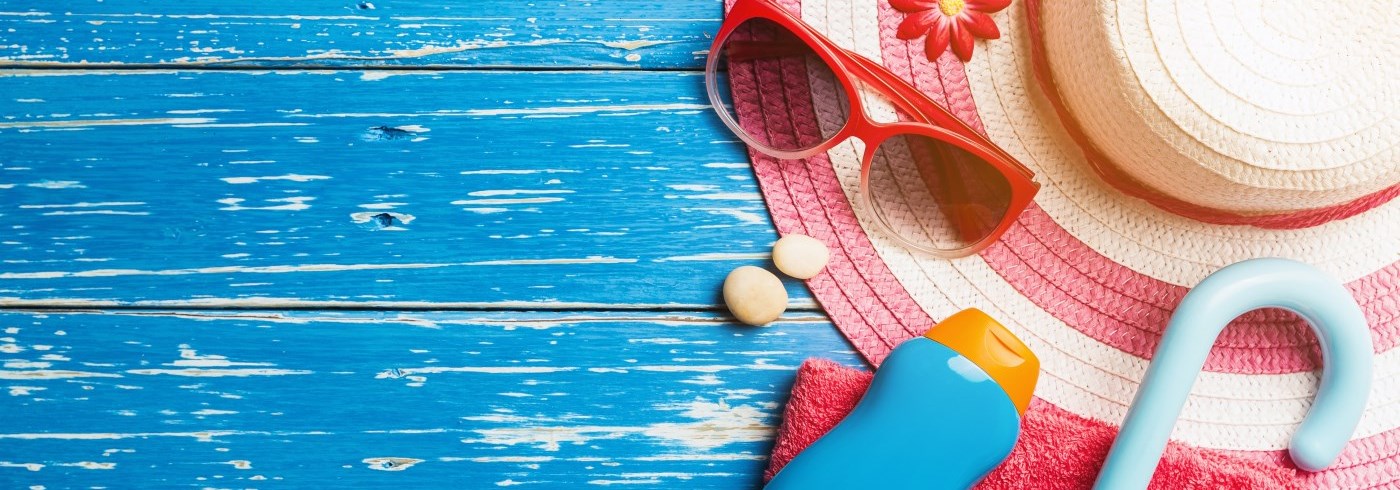
Sun Safety and Tanning
You should practice sun safety all year. This will protect you from the harmful effects of ultraviolet (UV) radiation. The information below will help you lower your risk of UV exposure from the sun or indoor tanning beds.
Order sun safety resources online
The dangers of tanning
There is no safe way to get a tan. Tanned skin is a sign of damaged skin.
|
Ultraviolet (UV) radiation |
|
The sun gives off an invisible light called UV radiation. Lamps in tanning beds or sun lamps also give off UV radiation. UV rays can damage the skin during any season or temperature. UV rays reflect off:
|
|
Tanning and skin cancer |
|
Too much UV radiation from the sun or tanning beds is the main cause of skin cancer. Skin cancer is the most common type of cancer in Ontario. UV radiation from tanning beds can be five times stronger than the mid-day summer sun. Tanning beds increase your risk of skin cancer. It causes premature skin aging and eye damage. The World Health Organization (WHO) puts tanning beds in its highest risk category for cancer, along with tobacco and asbestos. Using a tanning bed before the age of 35 increases the risk of developing skin cancer. |
|
Tanning bed use among youth |
|
A 2012 IPSOS survey found that tanning bed use is increasing in students in grades 7 to 12 in Ontario. This survey also found that:
|
|
Ontario's Skin Cancer Prevention Act |
|
In Ontario, sale, marketing and advertising of artificial tanning services to youth under 18 years of age is prohibited. The Skin Cancer Prevention Act protects young people from the harmful effects of ultraviolet radiation from tanning beds. Using a tanning bed is particularly dangerous for young people. Using tanning beds before age 35 can increase a person’s risk of melanoma by 75 per cent (CDC, 2013). The Act:
For more information about how the Ontario's Skin Cancer Prevention Act affects your business, call the Durham Health Connection Line. |
| Additional resources on tanning beds and skin cancer prevention |
How to stay sun safe
Sun protection
Use these sun safety tips to help you stay safe in the sun.
|
Check the UV index |
|
Check the UV index to find out how strong the sun is. The UV index ranges from zero to eleven or higher. You need more protection when the number is higher. This is because the sun is stronger. |
|
Limit time in the sun |
|
The sun is strongest between 11 a.m. to 3 p.m. Plan your outdoor activities before 11 a.m. or after 3 p.m. Do this to avoid the sun's strongest rays. Keep babies less than one year old out of direct sunlight. |
|
Seek shade |
|
Shade can lower your exposure to UV radiation by 75 per cent. Shade can also help to:
Seek shade under:
If you do not have shade, create your own using these four shade planning tips:
|
|
Wear UV-protective clothing |
|
You can wear clothing to protect yourself from the sun. This includes:
|
|
Use sunscreen |
|
Protect your skin from UV rays with proper sunscreen use all year:
|
|
Related links |
Sun safety at school and work
You can use these sun safety tips to help you stay safe at school and in the workplace.
|
Schools and child care facilities |
|
Schools can help prevent skin cancer by teaching children healthy sun-safe attitudes and behaviours. Order sun safety resources onlineChild care facilitiesWe have sun safety resources for child care facilities to use to teach children sun safety behaviours and promote a sun-safe environment in your facility. Sun safety resources for child care facilities |
| Work |
|
When you work outdoors, you have more exposure to UV radiation. This is the main cause of skin cancer. Follow general sun safety tips to reduce your risk as well as:
For more information on workplace sun safety programs, visit SunSafetyAtWork.ca. |
Contact Us




